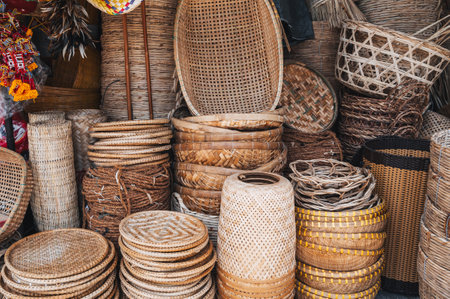Introduction to Indian Handmade Furniture
Handmade furniture holds a special place in Indian homes, reflecting the country’s deep-rooted artistic heritage and rich cultural traditions. Unlike mass-produced pieces, handcrafted furniture is valued not just for its beauty but also for its soul—each piece tells a story of skilled artisans, time-honoured techniques, and regional materials passed down through generations. In India, such furniture often becomes a cherished heirloom, symbolising both family legacy and national identity. The presence of these unique creations in Indian households serves as a bridge between the past and present, preserving traditional craftsmanship while adapting to modern needs. This blend of function and artistry ensures that Indian handmade furniture remains more than just utilitarian—it stands as a vibrant testament to India’s enduring love for creativity and cultural preservation.
Popular Traditional Indian Woods
India’s rich tradition of handmade furniture owes much to its native woods, each offering unique qualities suited to the country’s climate and culture. The selection of wood is more than a practical decision—it reflects heritage, regional customs, and even spiritual beliefs. Here are some of the most cherished woods used in traditional Indian furniture-making:
| Wood Type | Main Characteristics | Cultural Relevance & Uses |
|---|---|---|
| Sheesham (Indian Rosewood) | Dense, durable, with a rich grain pattern; naturally resistant to termites and decay. | Highly valued for both structural and decorative pieces; symbolizes strength and prosperity in many North Indian households. |
| Teak | Oily texture, golden-brown hue, weather-resistant, ages beautifully over time. | Historically used in royal palaces and temples; considered auspicious, especially in South India, for long-lasting heirloom furniture. |
| Mango Wood | Lightweight yet sturdy; sustainable as it is sourced from old mango fruit trees after their productive life. | Popular for eco-friendly designs; often found in contemporary urban homes as well as traditional settings due to its affordability and beautiful finish. |
| Sal Wood | Heavy, coarse-grained, extremely strong and water-resistant. | Commonly used in rural areas for robust frames and outdoor furniture; associated with longevity and resilience in Indian folklore. |
Sheesham (Indian Rosewood): Recognised for its deep grains and natural shine, Sheesham is a favourite among artisans in Rajasthan and Uttar Pradesh. Its toughness makes it ideal for intricately carved beds, cabinets, and dining sets that can be passed down generations.
Teak: Known locally as “Sagwan”, teak has been celebrated since ancient times. It’s the go-to choice for premium furniture pieces—often wedding gifts or family treasures—thanks to its resistance against pests and elegant appearance.
Mango Wood: Fast-growing and renewable, mango wood appeals to eco-conscious buyers. Its versatility allows craftsmen to experiment with modern finishes while retaining traditional shapes.
Sal: A staple material in Eastern India, sal wood endures humidity and heavy usage, making it perfect for village cots and temple doors.
Choosing the right wood isn’t just about utility; it’s a way of honouring India’s diverse landscape and centuries-old woodworking legacy. Whether you’re looking at a Sheesham almirah or a mango wood coffee table, each piece tells a story rooted in tradition.

3. Natural Materials Beyond Wood
While wood has always been the backbone of Indian handmade furniture, the creative spirit of Indian artisans extends far beyond timber. Cane, bamboo, jute, and wrought iron are some of the treasured materials that are woven into the vibrant tapestry of Indian craftsmanship. These natural materials are not only abundantly available across the country but also embody sustainability and versatility, reflecting India’s deep-rooted connection to its environment.
Cane and Bamboo: Lightweight Elegance
Cane and bamboo have been cherished in Indian furniture-making for generations, especially in states like Assam, Kerala, and West Bengal. Artisans skillfully weave these flexible materials into beautiful chairs, stools, and even headboards. Their lightness makes them ideal for easy movement and airy interiors — a feature highly valued in many Indian homes where space is at a premium. The intricate patterns achieved through hand-weaving add a touch of traditional charm while keeping the furniture eco-friendly.
Jute: Earthy Strength
Jute, known locally as the ‘golden fibre’, is another sustainable material widely used in handmade furniture. From robust ropes to elegant weaves for seating and backrests, jute offers both strength and a rustic appeal. Its earthy texture brings a sense of warmth and authenticity to living spaces, resonating with India’s love for organic aesthetics. The use of jute is especially popular in rural communities where artisans blend traditional techniques with innovative designs for modern tastes.
Wrought Iron: Enduring Grace
Wrought iron has long found its place alongside natural fibres in Indian handmade furniture. Skilled blacksmiths shape iron into graceful curves and sturdy frames, often adorning pieces with delicate floral or geometric motifs inspired by local culture. Whether it’s a regal daybed or an artistic coffee table, wrought iron lends durability without compromising on elegance. Its fusion with other natural materials like wood or cane highlights India’s tradition of blending function with artistry.
A Celebration of Diversity
The thoughtful integration of cane, bamboo, jute, and wrought iron into handmade furniture showcases the diversity and ingenuity of Indian artisans. By drawing from nature’s bounty and respecting time-honoured techniques, these craftsmen create pieces that are not just functional but also carry the soul of India — making every home a celebration of heritage and sustainability.
4. Iconic Joinery and Carving Techniques
Handmade Indian furniture stands out for its remarkable craftsmanship, which is deeply rooted in time-honoured carpentry methods. Traditional joinery techniques have been passed down through generations, ensuring strength and longevity without relying heavily on nails or screws. The use of classic joinery not only enhances the durability but also preserves the aesthetic authenticity cherished in Indian homes.
Timeless Joinery Methods
The most iconic joinery techniques found in Indian furniture-making include mortise and tenon joints, dovetail joints, and wooden pegs. These methods create seamless connections between wooden parts, offering both structural integrity and visual appeal. Artisans carefully select the appropriate technique based on the type of furniture and wood used, ensuring each piece tells a unique story.
| Joinery Technique | Description | Common Usage |
|---|---|---|
| Mortise & Tenon Joint | A projecting tenon fits into a corresponding mortise hole, locked firmly together. | Doors, frames, chair legs |
| Dovetail Joint | Interlocking wedge-shaped cuts provide a tight fit without glue or nails. | Drawers, cabinets, chests |
| Wooden Pegs | Pegs are inserted to secure two pieces of timber together. | Bed frames, tables, benches |
Hand-Carved Detailing: A Celebration of Heritage
Intricate hand-carved detailing is another signature feature of traditional Indian furniture. Master artisans use chisels and mallets to create motifs inspired by nature, mythology, and local culture. Patterns such as paisleys, floral vines, elephants, and peacocks often adorn headboards, cabinet doors, and table edges. This handwork requires immense patience and years of experience—making every piece unique and culturally rich.
The Cultural Significance
Carving styles vary regionally—Jaipur is renowned for its delicate lattice work (jali), while Rajasthan favours bold floral patterns. These embellishments do more than beautify; they reflect spiritual beliefs and family heritage, bringing warmth and meaning into every Indian household.
5. Traditional Decorative Finishes
Indian handmade furniture is celebrated not only for its sturdy construction but also for its exquisite finishing touches that reflect centuries of artistic tradition. The finishing techniques employed by Indian artisans elevate each piece, transforming functional objects into works of art. Among the most cherished methods is natural oil polishing, often using locally sourced oils such as mustard or coconut. This process nourishes the wood, brings out its rich grain patterns, and imparts a warm, inviting sheen that deepens with age.
Lacquer finishing is another popular technique, especially in regions like Rajasthan and Kashmir. Artisans apply layers of lacquer made from tree resins, which protect the wood while giving it a lustrous, glass-like surface. These finishes are sometimes tinted with vibrant natural pigments to enhance their visual appeal.
Inlay work holds a special place in Indian craftsmanship. Furniture pieces may be adorned with intricate inlays made from bone, brass, or mother-of-pearl. These materials are carefully shaped and set into the wooden surface to create elaborate motifs—ranging from floral designs to geometric patterns—that highlight the artisan’s skill and patience. The city of Udaipur is particularly famous for its bone inlay artistry, while brass inlay can often be seen in traditional South Indian pieces.
Hand-painting is yet another distinctive finishing touch found on Indian furniture. Artisans use natural dyes and mineral-based paints to decorate chests, cabinets, and chairs with colorful scenes inspired by mythology, folklore, or local flora and fauna. Each painted piece tells a unique story and adds character to any living space.
Together, these traditional decorative finishes embody the essence of Indian culture—blending artistic creativity with practical durability. Whether through the subtle glow of oiled wood, the shimmering surface of lacquer, the intricate patterns of inlay, or the lively hues of hand-painted motifs, these time-honoured techniques ensure every handmade furniture item is truly one-of-a-kind and deeply rooted in India’s rich heritage.
6. Regional Variations and Cultural Influence
India’s vast cultural diversity is beautifully reflected in its handmade furniture, with each region showcasing its own distinct materials, techniques, and design sensibilities. Regional variations are a hallmark of traditional Indian furniture, highlighting the influence of local traditions, climate, and lifestyles. For instance, Rajasthani furniture is renowned for its bold carvings, vibrant colours, and intricate mirror work, inspired by the royal heritage of Rajasthan. This style often features solid wood like teak or sheesham, enhanced with hand-painted motifs that tell stories of valor and festivity.
Gujarati furniture, on the other hand, is celebrated for its detailed woodwork and use of natural dyes. Artisans from Gujarat masterfully incorporate inlays using bone, brass, or mother-of-pearl to create elaborate floral and geometric patterns. The designs often reflect the lively spirit and rich textile traditions of the state.
Moving to the south, Kerala furniture stands out with its understated elegance and functionality. Crafted primarily from rosewood or jackfruit wood, Kerala’s pieces are designed to withstand the humid coastal climate. Distinctive features include smooth curves, simple yet graceful forms, and often cane weaving for added comfort.
These regional styles are not just about visual appeal; they embody the soul of their communities. The choice of materials—whether locally sourced woods or natural fibres—and the time-honoured crafting techniques are passed down through generations. In every Rajasthani chest, Gujarati swing, or Kerala chair lies a unique story shaped by local customs and aesthetics.
This celebration of diversity ensures that traditional Indian handmade furniture remains timeless and meaningful—each piece a living testament to India’s rich heritage.
7. Caring for Your Handmade Indian Furniture
Handmade Indian furniture, crafted with traditional materials like sheesham, teak, mango wood, and adorned with brass or bone inlay, requires thoughtful care to preserve its unique beauty and cultural essence. Here are some practical tips tailored for Indian homes and climates:
Regular Cleaning Practices
Dust your furniture gently using a soft, dry cotton cloth to avoid scratches on intricate carvings or inlay work. For pieces with natural oil finishes, occasionally wipe them with a slightly damp cloth followed by immediate drying. Avoid harsh chemical cleaners, as these can damage both wood and decorative elements.
Managing Humidity and Climate
India’s diverse climate means furniture is often exposed to high humidity during monsoons and dryness in summers. Place your furniture away from direct sunlight and sources of heat to prevent warping or fading. Use dehumidifiers or silica gel packs during the rainy season to protect wooden surfaces from swelling or mold growth. Conversely, applying a thin coat of natural wax or oil during dry months helps retain moisture and prevents cracks.
Special Care for Traditional Finishes
If your furniture features lacquered or painted surfaces, avoid excessive moisture which can cause peeling. For brass or metal accents, polish gently with a mixture of lemon juice and salt to maintain shine without damaging adjacent woodwork.
Preserving Heritage for Generations
Traditional Indian furniture is more than just decor—it’s a legacy. By following simple yet effective care routines, you ensure that each handcrafted piece remains vibrant and sturdy, reflecting India’s timeless craftsmanship for years to come.


